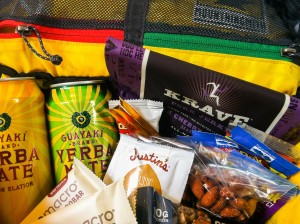
Photographers often work long days full of stressful shoots, hauling heavy gear, later followed by late nights awake in front of a computer screen editing to finish projects on tight deadlines. Whether you’re in a studio under fluorescent lighting or outside under the sun the story is the same and both environments bring their own unique sets of challenges.
A healthy diet, or simply how you eat, can impact your shoot for that important client you’re trying to impress and help you stay alert, fight fatigue, and overcome those challenges throughout the day meaning your client will be happy and ensuring you get what you want from your shoot.
Pre Shoot
You should already be eating well which means lots of fruits, vegetables, healthy meats (say goodbye to lunch meats and fast food “meat”), and healthy fats such as olive oil, nuts, and coconut oil. Your body will use these fats and proteins as fuel and the fruits and vegetables give you the vitamins and minerals your body needs. Grains can end up being a filler food devoid of nutrients, especially after being heavily processed so it’s best to fill up on leafy greens, proteins and fats to get necessary nutrients.
You should be avoiding high sugar foods and artificial lab made “food”. While delicious, many of these foods cause inflammation in the body and can lead to upset stomachs and diseases. These foods are also devoid of nutrients and do nothing good for your body.
Staying hydrated is also important as your body needs the fluid to process food. Drinking 64 oz of fluids (non-caffeinated) per day is sufficient but you should drink when thirsty if needed. Sleep is also important for your body to properly metabolize food and water.
Eating properly means you can start your shoot on a full tank, full of clean energy.
During
Make mental notes to eat and drink while out shooting. If you have to set some sort of timer or notification on your phone to remind yourself to eat and drink then do it. Replacing what your body is using while out and about will help keep your energy levels up and you thinking clearly. I recommend eating a small snack followed by some liquid every 15 minutes. A handful of nuts, a granola bar, or some jerky will keep some calories and thus fuel for your body to burn.
Energy gels, chews, and energy beans are an easy way to get calories. Experiment to find which ones you like.
Water is a wonderful way to hydrate but sometimes it is not enough. Adding electrolytes to your water keeps you hydrated and reduces your chance of developing muscle cramps. Powders and tablets are great and can easily be added to water bottles and hydration bladders. When it’s hot or you’re at higher elevations be sure to drink plenty of liquids to prevent dehydration.
Caffeinated drinks can provide fluids but should not be your only source of water. Limit yourself to under a few hundred mg of caffeine per day.
I usually bring along a bottle of ibuprofen or some other type of pain killer just in case.
After
After a long day out shooting it’s essential to recover properly with lots of calories and protein to repair muscles. Protein recovery drinks are great and easy way to recover from a hard day. Try to eat a full meal with lots of protein, fruits, and vegetables. This will help your body recuperate from the beating it just took.
Why should you do this? Cause your client doesn’t care if you’re sick or tired. They paid you and expect results no matter what. You can’t be the weak link in a shoot and a proper diet will help you avoid that.
Quick Tips
– Hot liquids like tea, matè, coffee, and soup broth can keep your body warm when it’s cold, prevent hypothermia, and keep you hydrated. A small camp stove will become your best friend when shooting in cold environments.
– Cold liquids can keep you cool when it’s hot. Freeze water bottles or use an insulted bottle to keep them cold. Watch out for condensation that forms on frozen bottles and don’t let your gear get soaked.
– Stomach issues can be prevented with ginger and peppermint. Both are proven to help with nausea and stomach pain. Ginger chews, teas, and pills are available at most health food stores. Keep some on hand just in case.
– Try out foods before you go and use them on a shoot. I can’t think of anything worse than having the runs while on a mountain hauling a backpack full of camera gear.
– Baby wipes or toilet paper in a ziploc bag are great and can be a life saver if you do end up with some intestinal issues. Pack it in, pack it out. All of it.
This post is part 1 in a series of Adventure Photography School posts from Derrick Lytle. Stay tuned for more.
Derrick Lytle is a free-lance photographer and Mountainsmith ambassador, living out of his van and living life to the fullest. For more from Derrick, check out his demo reel below and follow him.
facebook | instagram | youtube | tumblr
http://vimeo.com/83668640
